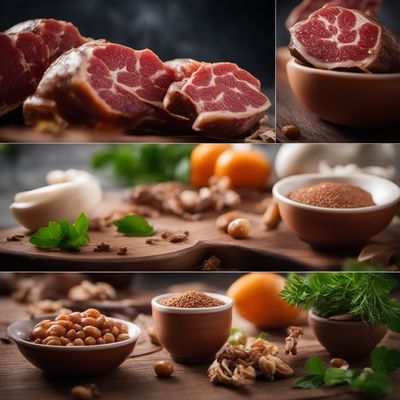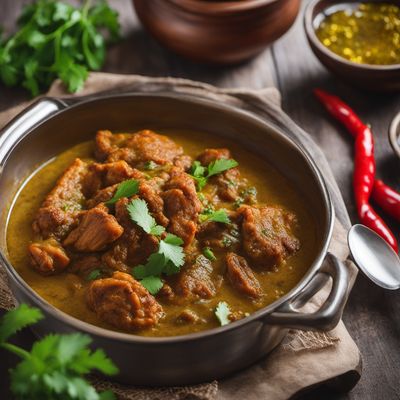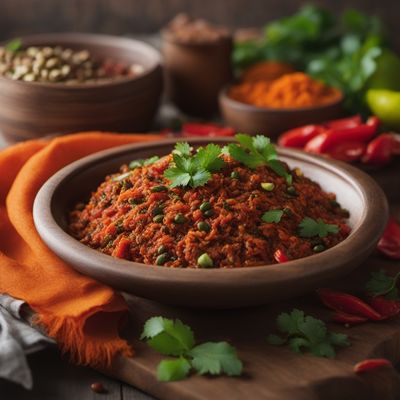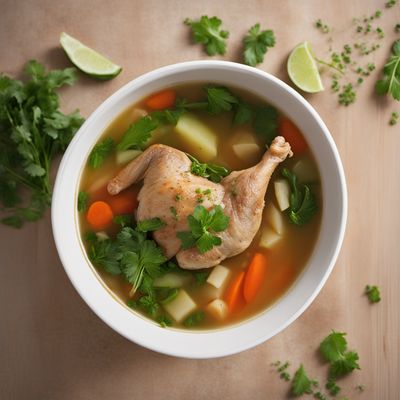
Ingredient
Chicken carcase
The Foundation of Flavor: Unleashing the Potential of Chicken Carcase
Chicken carcase refers to the skeletal remains of a chicken after the meat has been removed. It is typically composed of bones, cartilage, connective tissue, and some residual meat. The carcase is known for its gelatinous texture and is prized for its ability to enhance the flavor of stocks, broths, and sauces. Its rich collagen content lends a velvety mouthfeel and imparts a savory umami taste to dishes.
Origins and history
The use of chicken carcase in cooking can be traced back to ancient times when resourcefulness was key. It has been a staple ingredient in traditional cuisines around the world, including Chinese, French, and Jewish cooking. The carcase's ability to extract maximum flavor from minimal ingredients has made it a valuable component in many culinary traditions.
Nutritional information
Chicken carcase is not typically consumed as a standalone dish, but it contributes to the nutritional value of stocks and broths by providing essential minerals, collagen, and gelatin.
Allergens
Chicken carcase may contain traces of allergens such as gluten, if used in commercially prepared stocks or broths.
How to select
When selecting chicken carcase, look for pieces that are fresh, with no signs of discoloration or unpleasant odor. The carcase should be intact, with minimal damage or breakage. Additionally, choose carcases from chickens that have been raised in humane and sustainable conditions for the best quality.
Storage recommendations
To maintain the freshness and quality of chicken carcase, store it in a sealed container or freezer bag in the freezer. It can be kept for up to 3 months without significant loss of flavor or texture.
How to produce
Amateur cooks can produce chicken carcase by saving the leftover bones and carcasses from roasted or cooked chicken. Simply remove any remaining meat and store the carcases in airtight containers in the freezer until ready to use.
Preparation tips
To extract maximum flavor from chicken carcase, it is recommended to first roast it in the oven until golden brown. This step enhances the depth of flavor. Then, simmer the carcase with aromatic vegetables, herbs, and water for several hours to create a rich and flavorful stock or broth. Skimming off any impurities that rise to the surface during cooking will result in a cleaner and clearer final product.
Culinary uses
Chicken carcase is primarily used to make stocks, broths, and sauces. It serves as the foundation for soups, stews, risottos, and gravies, providing a robust and savory base. Additionally, it can be used to infuse flavor into rice or grains, adding depth to pilafs and paellas.
Availability
Chicken carcase is commonly available in regions where chicken is consumed, including North America, Europe, and Asia.
More ingredients from this category » Browse all

Bovine carcase
The Foundation of Flavor

Turkey carcase
The Versatile Turkey Carcase

Wild boar carcase
Untamed Bounty: Wild Boar

Deer carcase
Venison: The Wild Delicacy

Rabbit carcase
The Art of Rabbit: Unlocking the Culinary Potential of Rabbit Carcass

Pig carcase
Pig Carcase: A Versatile Ingredient

Asses-mules-hinnies carcase
The Forgotten Meat

Duck carcase
The Essence of Duck: Unveiling the Secrets of Duck Carcase

Ratites carcase
The Exotic Delicacy: Ratites Carcase Unveiled

Goose carcase
The Flavorful Foundation

Horse carcase
The Noble Beast: Horse Meat

Goat carcase
The Wholesome Base
Recipes using Chicken carcase

Muhajir Chakna
Savory Delights: Muhajir Chakna - A Fusion of Indian and Muhajir Flavors

Grilled Chicken Cartilage Skewers
Crispy Delights: Grilled Chicken Cartilage Skewers

Ají de Fideos with Chicken and Vegetables
Peruvian Spicy Noodle Delight

Pepián de Cuy with Guatemalan Flavors
Guatemalan Delight: Savory Pepián de Cuy

Peruvian Chicken and Rice Soup
Savory Peruvian Comfort: Chicken and Rice Soup

Qatari-inspired Spiced Rice with Lamb
Saffron-infused Lamb Rice: A Qatari Delight

Grilled Chicken Cartilage Skewers
Crispy Chicken Delights: Grilled Cartilage Skewers

Latin-inspired Chicken and Rice Delight
Savory Fiesta: Latin-inspired Chicken and Rice Delight

Viennese-style Chicken Soup
Austrian Delight: Viennese-style Chicken Soup